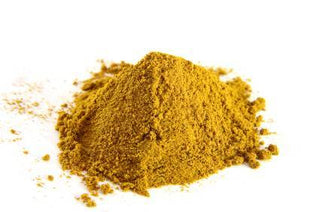Curry is not a single herb but a blend of spices. Although curries can differ by color (red, yellow, green) and spice mix, the primary ingredient is turmeric. Other common ingredients include ground cumin, coriander and cardamom.
Health Benefits
Curcumin is what gives turmeric its distinctive yellow color and is associated with the health benefits of curry. Curcumin is antioxidant and anti-inflammatory properties. Curry powder can be used to quell the inflammation of the joints. Some studies indicate that populations with large consumption rates of curry have a significantly reduced risk of having certain cancers.
Nutritional Value
According to NutritionData, curry powder has strong anti-inflammatory properties (371 rating for 1 tablespoon vs. 493 for 3 oz. of Atlantic salmon), so incorporating curry into your meals is part of an anti-inflammatory diet. This spice is also a good source of manganese, iron, vitamin K and vitamin E.
Recipe Ideas
You don’t have to make a traditional curry dish to enjoy this spice. Curry, when used sparingly, adds flavor to seafood dishes. Try our Shrimp Scampi recipe which is a new twist to this traditional garlic, lemon and white wine based dish. Or, try our Curry Chicken Salad which can be served on a bed of lettuce.
Interesting Facts
As a member of the ginger family, turmeric is a mild digestive that acts as a stimulant and is a carminative (relieves intestinal gas).

